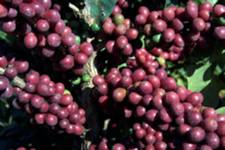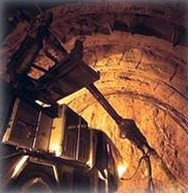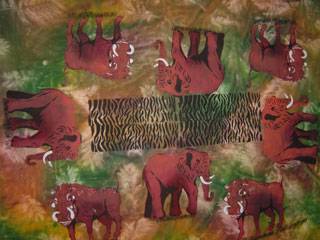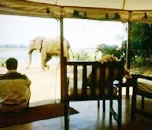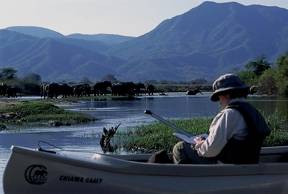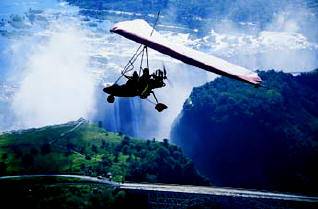|
|
|
 |
|
Energy
Sector
Investment Opportunities
Electricity
contributes to the export earnings of Zambia with demand
growing from neighbouring countries. The Zambian Power system
is
interconnected at a high voltage to the North of Botswana and
Namibia. These countries form potentially large export
markets.
Potential opportunities identified in
this sector are
Kafue Gorge Lower
HydroElectric Project, Itezhi-tezhi HydroElectric Project,
Zambia-Tanzania Interconnector and Zambia-Namibia interconnector.
Exploration
potential for hydrocarbons (oil and gas) is one area that
has not been tapped fully—hydrocarbon source rocks are proven
and
are preserved in all basinal areas of Zambia. Government
welcomes
active participation from prospective investors with modern
technological expertise.
Energy Incentives
The
fiscal incentives have been devised to increase electricity
generation and transmission capacity in Zambia to provide for a
competitive environment comparable with other developing countries
seeking private power investment.
The following fiscal incentives may be allowed:
- Private
power generation and
transmission
companies may be exempt from corporate income tax on incomes earned
from sale of or transportation of electricity for a period of 10 years
from the commercial operations date.
- The companies are allowed to import
all
types of plant and equipment
for generation, transmission and distribution without payment of
customs duties, VAT and other surcharges.
-
Power generation and transmission to be declared an industry and the
companies to be eligible for all other concessions available to
industrial projects.
-
Orders received by local engineering and manufacturing companies from
private power companies will be treated as an export for refinance as
may be available under the rules for export.
-
Although the government encourages participation of local investors
in the power sector, it is not mandatory and foreign
companies/investors are free to set up projects without local partners.
-
Withholding tax on dividends on shares of a company shall be payable
to shareholders of the private power companies from any withholding tax
in excess of 7.5%.
|
|
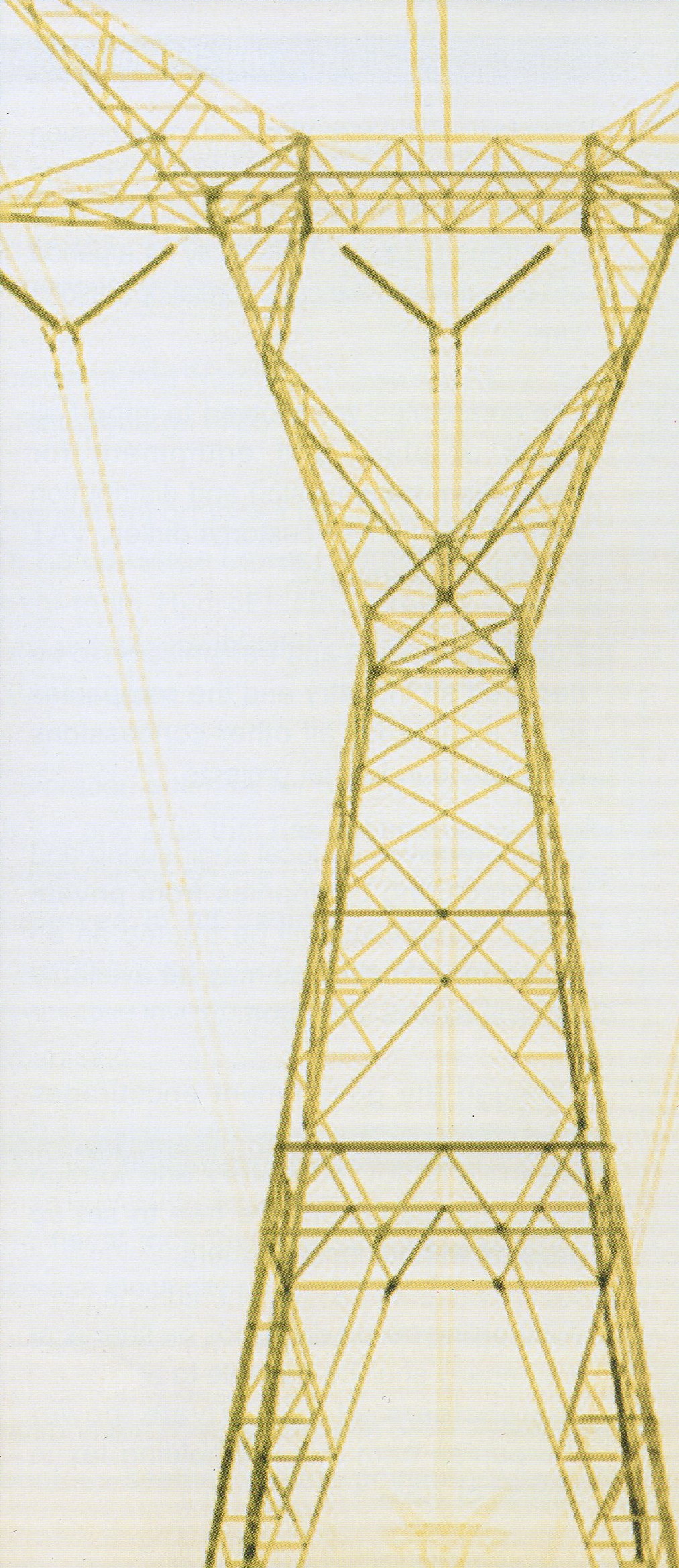
|
|
|
Agriculture
Sector
Agriculture
Facts on Zambia
Area: 752,614 km2
Mean Altitde: 1200m above sea level
Rivers: Zambezi, Kafue, Luangwa, Chambeshi and Luapula rivers
Lakes: Tanganyika, Bangweulu, Mweru-wa-Ntipa, Kariba
Climate: Tropical with clearly separated dry and raily season
influenced by the south to north movement of the Inter tropical
Convergence Zone (ITCZ)
Average annual rainfall: 1,000mm
Land use distribution:
Arable land 47%
Forests 9%
National parks,
Game management Areas 30%
Hills, Escarpments,
Swamps 12%
Urban Development 2%
Vegetation: Savannah type and other woodlands type mainly
found
on plateau.
Energy: In abundance: 4 major hydro power stations and
various
smaller power stations.
Investment Opportunities
Government
is putting emphasis on
agriculture to be the
main stay of the economy, diversify away from dependency on copper and
help alleviate poverty. Opportunities exist in production of:
- Food crops such as maize, beans,
potatoes, wheat and
rice.
- Cash crops such as coffee, tea, sugarcane, sisal, paprika, cotton,
malt and barley.
- Game Ranching
Horticulture:
Opportunities
exist for cut flowers,
fresh beans, mushrooms and citric fruits
Agriculture
support: Construction of dams and boreholes,
installation of irrigation systems and extension services
Agro-processing:
Import substitution for edible and other
oils
such as butter, margarine, sunflower, and cottonseed.
Poultry Products: Hatcheries for the production of chicken
for
both domestic and regional consumption are under exploited.
Fisheries: Zambia’s abundant fresh water and rivers
provide
vast fishing and fish farming potential.
Leather and leather goods:
Production of finished
leather.
Livestock:
Non conventional livestock farming e.g. crocodile
farming represent an exciting new opportunity.
Agriculture Incentives
Income received from farming—15%
Income Tax Allowances
∙Wear and tear allowance of 50% per year on machinery used for farming;
∙Capital expenditure allowance of 20% per year for the first five years
on farming improvements;
∙Capital expenditure allowance on the growing of coffee, tea, bananas,
citrus fruits or similar plants qualife for a development allowance of
10% per year up to the second year of production;
∙Farm work allowance of 100% for expenditure on farm land such as
stumping, clearing prevention of soil erosion, boreholes, wells water
conservation and aerial or geophysical survey;
Income Tax on Dividend from Farming
Income received by way of dividend declared from farming shall be
exempt from tax for the first 5 years of operations.
Customs Duty
∙Customs
duty exemption on most capital machinery and equipment for agriculture;Reduced
duty on/duty free imports
∙Reduced
duty on/duty free imports of certain raw materials.
Import VAT Deferement
Import VAT deferement on eligible plant/machinery and raw materials.
|
|
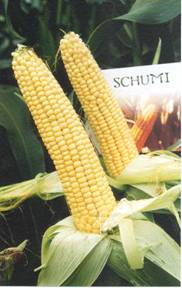
|
Mining
Sector
Investment Opportunities
Zambia’s
amazingly wide
spectrum of mineral
resources spans a range of metals, gemstones, a variety of industrial
minerals and potential energy
resources—uranium, coal and hydrocarbons. Ranging
in size
from world-class operating
mines to small prospects, the multiplicity and variety of resources
demonstrate clearly the
opportunities for further exploration and exploitation.
-Copper and Cobalt
Apart
from the currently producing mines of the Copperbelt large
portions of Zambia Constitute attractive exploration targets.
-Lead and Zinc
As
with copper, a number of known deposits can be found, the important
ones being at Chipirinyuma near Nyimba with 2Mt at 4% Zinc, and the
Lusaka-Mumbwa-Kabwe triangle.
-Nickel and Platinum Group Elements
A
small but significant sulphide deposit occurs in the east and south
of Lusaka. Minor platinum group elements are produced as a
by-product of copper-refining.
-Tin and Tantalum
Recorded
tin areas include the Central and Eastern part of the country
in Serenje, Mumbwa and Chama.
-Iron
Substantial
resources of iron have been identified in central and
western Zambia. Total resources of more than 900Mt with an
iron
content greater than 50% have been provisionally estimated, with some
individual deposits up to 200Mt in size.
-Gold
Only
small quantities of gold have been mined and the interest is
growing. A total of 2000kg of gold has been produced from 20
deposits since 1906 and does not include gold produced as a by product
of the copper recovery.
-Diamonds
Alluvial
diamonds have been reported throughout much of northern,
north-eastern and western Zambia and in many places are accompanied by
indicator minerals.
-Emeralds
Zambia
produced about 20% of the world’s emeralds and they
are
much sought after due to their deep green colour. The
gemstones
are recovered exclusively from the Ndole Rural area of the southern
Copperbelt.
-Industrial Minerals
Zambia
boasts of a wide range of industrial minerals capable of
underpinning the anticipated growth in the mining, manufacturing and
agricultural sectors.
-Energy Minerals
Energy
minerals of Zambia include coal, uranium, geothermal and
possibly hydrocarbons. Work in all these fields is in
progress in
the form of research, evaluation and exploitation.
Mining
Incentives
The
Mines and Minerals Act of 1995 offers a wide range of incentives
which include:
Income Tax Allowances
Buildings
for Mining enjoy an initial 10% and an annual 5% wear
&
tear Allowance of the cost.
Relief from Income Tax
Any
investment in mining, including prospecting, attracts deductions
from income tax on capital expenditure and other allowable mining
expenses.
Relief from Other Surcharges
A
holder of a mining right is exempt from customs, excise and VAT
duties in respect of all machinery and equipment (including specialized
motor vehicles) required for exploration or mining activities.
|
|
|
Manufacturing Sector
Investment Opportunities
The
raw material base largely determines
the development
potential of the manufacturing sector. The processing of
agricultural products has great potential because of favourable
conditions for agricultural production itself. In addition,
deposits of base metals, a variety of industrial, precious and
semi-precious minerals and metals exist in many parts of the country.
Agriculture-based
industries such as sugar, food processing, cotton
spinning and weaving, etc. are good examples favoured also by domestic
demand factors. Other industries with good potential are
cement,
copper products, wood products, gemstone cutting & polishing,
leather etc.
Engineering,
Textiles, Wood & Wood Products, Building
Materials,
Processed Foods, Chemicals, Leather and Leather Products and
Handicrafts also offer potential opportunities.
Textiles and Apparels
Textile,
Garment and apparel manufacturing has a very high potential in
Zambia. Investment opportunities exist under manufacturing
under
bond scheme (MUBS) and in the export processing zones for production of
products such as yarn and garments. Zambia qualifies for the
African Growth Opportunity Act (AGOA) and Zambian textile already
enters the American market.
Wood processing
Currently
Zambia exports raw timber which would otherwise be processed
into finished wood products. In this regard, there is
potential
to set up wood processing plants for manufacture of consumer and
industrial products. The best natural timber species are
found in
Zambia.
Metal and Engineering works
Zambia has a variety of minerals which are exported as raw
materials.
At
present there is very little value addition being
made to these mineral exports. Hence there are investment
opportunities in processing copper and other minerals into intermediate
and finished goods.
Zambia
imports all major spare parts required for machinery.
Investment opportunities exist to see up engineering works that can
manufacture the much needed spare parts for various industrial
machinery.
Vehicle Parts and Assembly
Zambia’s
motor industry imports almost all motor vehicles and
all
automobile spares. Demand is every increasing as new and
second
hand vehicles flood the country. Opportunities exist in the
assembly and manufacture of motor vehicles and spares.
Seeking
joint ventures could possibly be the best way of accomplishing this.
Manufacturing Incentives
Income Tax Allowance
∙Buildings for manufacturing enjoy an initial 10% and an annual 5% wear
& tear allowance of the cost.
∙Machinery for manufacturing qualify for wear & tear allowance
of
50% per annum for the first two years.
Customs Duty
∙Customs duty exemption on most capital machinery and equipment for
manufacturing.
∙Reduced duty on, or duty free imports of certain raw
materials.
Import VAT Deferement
Import VAT deferement on eligible plant/machinery and raw materials.
|
|
|
|
Tourism
Sector
Investment Opportunities
Potential
of Zambia as a
“one-stop”
destination offers excellent prospects for advancement of this highly
under-developed sector. With 19 National Parks, 23 Game
Management Areas, the largest Water Fall in the world, and 23 million
hectares devoted to the conservation of spectacular variety of animals,
the scope for an integrated quality tourism related investment is very
attractive.
Opportunities
to promote adventure holidays—white-water
rafting,
canoeing, rock-climbing, hang-gliding, fishing, bungi-jumping at
Victoria Falls including its unique walking safaris offer excellent
tourism potential.
Accommodation and conference amenities
The shortfall of quality vacation accommodation of all types presents
the largest single investment opportunity, as well as development of
low-cost lodges for local tourists.
Opportunities
arising from water reserves
The
great expanses of open water provide many opportunities for
development. These include development of marinas and sailing
schools, as well as the establishment of activities such as boat
charter services, cruises, sailing, water-skiing, canoeing, and
whitewater rafting.
Organised tour excursions
There is great scope for organised day trips and extended tours or
safaris to sites of scenic, cultural and historic interest.
Adventure enterprises
National parks are open as locations for such enterprises, with
opportunities including managed safaris, as well as game fishing,
photographic or hunting safaris in designated areas, and various
adventure activities such as bungi jumping, rockclimbing, hang-gliding
and orienteering.
Outdoor
sports development
Zambia’s climate is ideal for the development of tennis and
equestrian facilities, as well as for holiday packages based on sports.
Cultural heritage exploration and tourism
The variety of traditional cultures and festivals is the least
developed of the country’s fascinating tourist assets.
Infrastructure and transport services
Heavy
investment is required especially for tourist access roads and
aerodromes. Unmet demand exists for transport services such
as
helicopters or small aircraft, water transport (including vessels), and
car hire operations.
Tourism Incentives
The Investment Act of 1993 (amended 1st April 1996) offers a wide range
of incentives which include:
Income Tax Allowances
∙Hotels enjoy an initial 10% and an annual 5% wear & tear
allowance
of the cost.
∙Machinery for tourism qualify for wear & tear allowance of 50%
per
annum for the first two years, and thereafter.
Customs Duty
∙Reduced duty on/duty free imports of certain raw materials.
∙Customs Duty on intermediate Goods 15% and Finished Goods 25%.
|
|
|
|
Institutions for
Investment, Industry and Trade Support
The
Zambia Privatisation
Agency (ZPA), formed in 1992, is an autonomous Agency of the Government
of Zambia. The function of the Agency is to plan, implement and control
the privatisation of State-owned enterprises in Zambia.
The Zambia Investment Centre was established under the Investment Act
of 1991 as part of the government strategy for economic reform. The
Centre is an autonomous institution that promotes both local and
foreign direct investment, facilitates the investment process and
monitors the implementation of projects. It also issues the formal
Investment Certificates that serve as the official recognition of one's
investor status in the country.
The Zambia Association of Chambers of Commerce and Industry (ZACCI),
the Zambia Association of Manufacturers (ZAM) and the Zambia National
Farmers Union (ZNFU) officially represent the business community.
|
|
|
|
|
|





